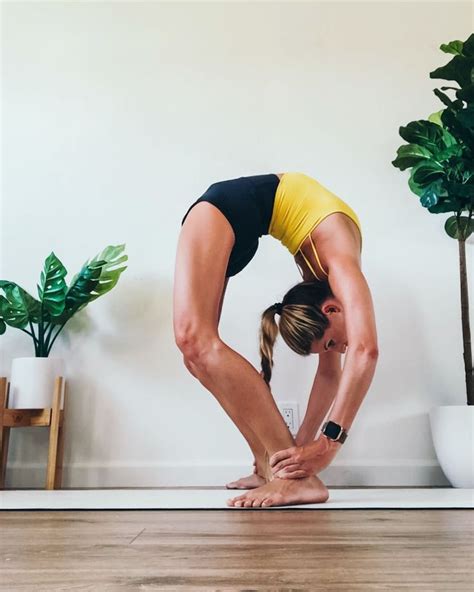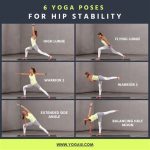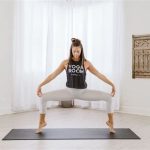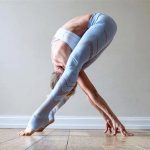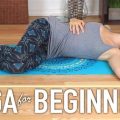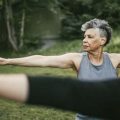Mastering 5 Challenging Yoga Poses to Enhance Flexibility: Techniques, Tips, and Strategies
Yoga is a practice that combines mindfulness, breath control, and physical poses to improve both mental and physical well-being. When it comes to enhancing flexibility, certain yoga poses are particularly effective. However, these poses can also be challenging, requiring practice, patience, and the right techniques. In this article, we will explore five yoga poses that are known for their ability to significantly improve flexibility. Along with detailed step-by-step instructions, we will discuss their benefits, potential challenges, and practical applications. Additionally, we’ll provide insight into the historical evolution of these poses and future implications for flexibility in yoga practice.
Key Concepts: Understanding Flexibility in Yoga
Flexibility is not just about how far you can stretch but about the mobility of your joints, muscle elasticity, and how your body moves in space. In yoga, flexibility involves lengthening and expanding muscles, as well as building strength in supportive areas. Here are key concepts to understand when pursuing flexibility through yoga:
- Active Flexibility: Stretching with muscle engagement
- Passive Flexibility: Reaching positions without muscle engagement
- Range of Motion: The extent of movement in a joint or group of joints
- Muscle Elasticity: The ability of muscles to return to their original length after stretching
- Alignment: Correct positioning of the body in various poses
Historical Context: Evolution of Flexibility in Yoga
Yoga, originating in ancient India over 5,000 years ago, has undergone significant transformations. Initially focused on spiritual enlightenment, the physical aspects of yoga, including flexibility, gained importance over time. Texts such as the “Hatha Yoga Pradipika” and “Yoga Sutras of Patanjali” highlight the importance of postures (asanas) for both physical health and spiritual growth. Flexibility was traditionally seen as a means to prepare the body for meditation. Today, many styles of yoga, including Ashtanga and Vinyasa, emphasize flexibility, combining ancient techniques with modern anatomical understanding.
Current State Analysis: Challenges in Developing Flexibility
While flexibility is often portrayed as an innate ability, it can be developed with consistent practice. However, individuals face various challenges when attempting to improve flexibility through yoga:
- Genetic Factors: Natural range of motion varies from person to person
- Inflexibility Due to Sedentary Lifestyle: Modern life often leads to stiff muscles and joints
- Overstretching: Pushing too hard can lead to injuries such as muscle strains or joint damage
- Lack of Warm-up: Stretching cold muscles increases the risk of injury
Yoga addresses these challenges by incorporating controlled, progressive stretching and emphasizing breath awareness, which helps practitioners gradually improve flexibility.
5 Challenging Yoga Poses for Flexibility
Below are five advanced yoga poses that can significantly improve flexibility. Each pose targets different muscle groups and joints, offering unique benefits for overall mobility. Follow the detailed guidelines to practice safely and effectively.
1. King Pigeon Pose (Eka Pada Rajakapotasana)
Target Areas: Hip flexors, quadriceps, lower back
This deep backbend stretches the entire front of the body and opens the hips. While it looks elegant, it requires significant flexibility and control.
- Steps: From a lunge position, slide the back leg straight behind. Bend the back knee and reach your arms overhead to grab the back foot, lifting the chest.
- Common Issues: Overstretching the hip flexors or lower back strain. Use a yoga strap to modify the pose initially.
- Solution: Gradually increase your range of motion with preparatory poses like Low Lunge (Anjaneyasana).
2. Standing Forward Bend (Uttanasana)
Target Areas: Hamstrings, lower back, calves
This pose lengthens the spine and stretches the hamstrings, requiring both balance and flexibility in the legs and lower back.
- Steps: Stand with feet hip-width apart, exhale, and hinge from the hips to fold forward. Keep your spine long and your hands on the floor or shins.
- Common Issues: Rounding the spine to reach the floor. Focus on bending from the hips, not the waist.
- Solution: Use blocks under your hands to support yourself while working toward deeper folds.
3. Wheel Pose (Urdhva Dhanurasana)
Target Areas: Chest, shoulders, back, wrists
Wheel pose is an intense backbend that opens the chest, shoulders, and spine, requiring a high degree of flexibility in the back and shoulders.
- Steps: Lie on your back, bend your knees, and place your hands beside your ears. Press into your hands and feet to lift your body into a backbend.
- Common Issues: Wrist or shoulder discomfort due to tightness in the upper body.
- Solution: Prepare with Bridge Pose (Setu Bandhasana) and Shoulder Openers to gradually build strength and flexibility.
4. Splits (Hanumanasana)
Target Areas: Hamstrings, hip flexors
The splits pose is a deep stretch for the hamstrings and hip flexors, requiring a significant range of motion in the legs.
- Steps: Begin in a lunge position, sliding the front leg forward and the back leg back. Use blocks under your hands for support if needed.
- Common Issues: Inflexibility in the hamstrings or hip flexors, leading to discomfort or imbalance.
- Solution: Use props to support your body and practice half-splits as a preparatory pose.
5. Bound Angle Pose (Baddha Konasana)
Target Areas: Inner thighs, hips, groin
This pose stretches the inner thighs and opens the hips, promoting flexibility in the lower body. It is commonly used as a hip opener in many yoga sequences.
- Steps: Sit with your legs bent and the soles of your feet together. Hold your feet and gently press your knees toward the floor.
- Common Issues: Tight hips or inner thighs causing discomfort.
- Solution: Sit on a folded blanket to elevate your hips, making it easier to maintain proper alignment.
Practical Applications of Flexibility in Yoga
Improving flexibility through yoga has numerous practical benefits beyond just achieving challenging poses:
- Injury Prevention: Flexible muscles and joints are less prone to strains and sprains.
- Improved Posture: Increased flexibility leads to better alignment, reducing the risk of back pain and other postural issues.
- Enhanced Athletic Performance: Flexibility aids in functional movements, which is beneficial for athletes in various sports.
- Mental Relaxation: Deep stretching triggers the parasympathetic nervous system, promoting relaxation and reducing stress.
Case Studies: Progressing Through Challenging Poses
Several case studies highlight the benefits of yoga for flexibility:
| Practitioner | Initial Challenges | Progress Over Time | Current Flexibility Level |
|---|---|---|---|
| John (Age 35) | Inflexible hamstrings, difficulty with forward bends | Improved hamstring flexibility through regular practice of Uttanasana | Can comfortably reach toes in forward bends |
| Sarah (Age 28) | Tight shoulders, struggling with Wheel Pose | Gradual shoulder opening through preparatory poses | Can hold Wheel Pose for 30 seconds |
| Luis (Age 42) | Hip tightness, limited mobility in King Pigeon | Consistent hip openers improved range of motion | Can achieve full King Pigeon pose |
Stakeholder Analysis: Who Benefits from Improved Flexibility?
The practice of yoga for flexibility impacts various stakeholders:
- Individuals: Enhanced mobility, reduced risk of injury, and mental well-being.
- Yoga Instructors: Offering specialized flexibility classes to a wider audience.
- Healthcare Providers: Recommending yoga to patients as part of physical therapy or injury prevention.
- Athletes: Using flexibility training to enhance performance and reduce recovery time.
Implementation Guidelines for Achieving Flexibility Goals
To safely and effectively improve flexibility through yoga, follow these guidelines:
- Consistency: Practice regularly, at least 3-4 times per week.
- Warm-up: Always begin with a proper warm-up to prepare the muscles.
- Use Props: Yoga blocks, straps, and blankets can assist in achieving difficult poses without injury.
- Listen to Your Body: Avoid overstretching or forcing movements.
- Progress Gradually: Set realistic goals and celebrate small improvements.
Ethical Considerations in Flexibility Training
Yoga practitioners should be mindful of the following ethical considerations:
- Non-harm (Ahimsa): Avoid pushing the body beyond its limits, which can cause injury.
- Self-awareness: Recognize your body’s unique limitations and work within them.
- Inclusivity: Yoga for flexibility should be accessible to all, regardless of body type or ability level.
Limitations and Future Research on Yoga Flexibility
Despite its benefits, flexibility training through yoga has certain limitations:
- Genetic Limitations: Some individuals may never achieve extreme flexibility due to structural differences in their joints.
- Time Commitment: Significant flexibility improvements require consistent and long-term practice.
- Overemphasis on Flexibility: Focusing too much on flexibility can lead to neglecting other important aspects of fitness, such as strength and stability.
Future research could explore the long-term effects of flexibility training on joint health, the psychological benefits of increased mobility, and the role of flexibility in injury prevention for athletes.
Expert Commentary on Flexibility and Yoga
Flexibility is more than just the ability to bend or stretch; it’s a key component of overall physical health. Experts agree that while flexibility training can be challenging, it’s worth the effort for the numerous physical and mental benefits it provides. Yoga, with its holistic approach, offers a safe and effective method for improving flexibility, and the poses discussed here are some of the best for achieving this goal. Whether you’re a seasoned yogi or a beginner, the journey toward improved flexibility can enhance your practice and improve your quality of life.
